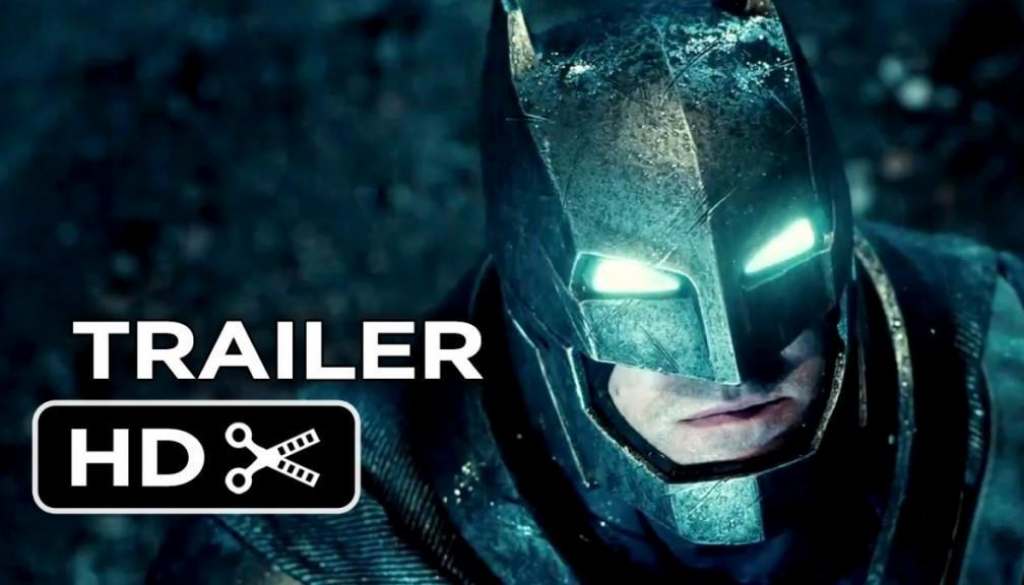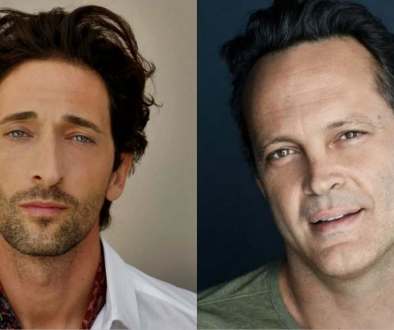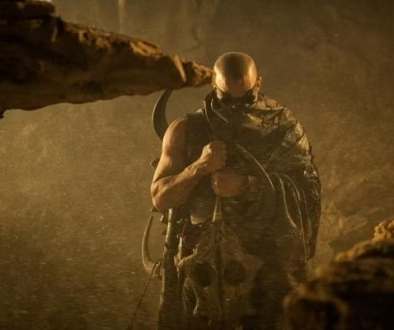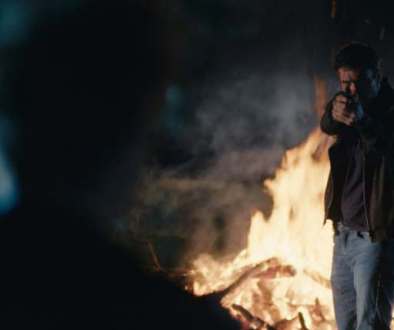TO THE HASHI: What The Hell Was So Wrong With Man of Steel?!
So recently the Batman V Superman: Dawn Of Justice trailer was unleashed upon us, eagerly peaking out the Venetian blinds of pirated videos and then, grudgingly, released officially (in clear HD!) by Warner Bros. and Legendary Pictures. Everyone and their mother flocked to the internet, their critical eyes cast upon the screen. “What would Zack Snyder offer?” they wondered, many of them skeptical while others still awaited the reel with sober enthusiasm.
By the time it was done, polarizing opinions had been formed. All of which, in some way or the other, influenced by the film’s predecessor; the somewhat infamous Man of Steel. And though I am not a Superman fan, I find myself among the group recorded as favorable in their opinion of the film. A film, that while flawed, achieved its primary objective; to render Superman appealing to a modern audience as well as adherent fans of the comic, and to launch a DC cinematic universe with the film as its springboard.
Before we talk about the Dawn Of Justice trailer, it behooves us to take a look back two years ago at Man of Steel and do some service to DC’s approach to world building. First, its clear from the very first reel that they aren’t doing it like Marvel, which is kinda good since, ya know, THEY’RE NOT MARVEL! And I promise you it’s important to scream that line, as well as repeat and perhaps chant it, in hopes that it will one day reach the Marvelites and DC Downers calling foul on every road not already tread by Captain America and Co.
Man of Steel had the tall task of rebooting Superman, a character that has, to an extent, diminished in relevance in the age of the anti-hero, and shortly after the failure of Superman Returns just a few years prior. For that film, Bryan Singer was criticized for presenting a Superman that went his entire film without throwing a single punch, who was transformed simultaneously into a deadbeat father and a creepy stalker who, it just so happens, can see through walls. His Superman was a toothless tiger, tied unwisely to a dated iteration. Kevin Spacey’s Lex Luthor was a waste, returning to the Gene Hackman interpretation complete with bumbling idiots for a crew and a Prometheus speech that only served to remind us all of what could have been.
For the reboot of the Superman mythology to succeed, it needed to distance itself from the past, and allow Christopher Reeve’s legacy to finally rest in peace. This meant that Superman would have to fight. And not only that. He would need to fight epically and on a grand stage. The film would also have to serve as a starter piece to the cultivation of a DC shared universe. It would need to be grounded in an atmosphere of sci-fi realism and human drama and yet set the stage for characters like Batman and Doomsday and Cyborg and Brainiac and Wonder Woman and Aquaman to eventually show up on the scene. A tall order indeed. And a serious undertaking, a party that characterizations drawn from the Super Friends model would not be invited to.
Snyder’s choice, a wise one, was to approach it as the set up to a classic mythology. George Lucas studied Joseph Campbell’s Hero With A Thousand Faces while developing his world for Star Wars. There is a preponderance on Classic Jungian archetypes scattered about, much like the way Snyder chose to approach the development of Superman’s Kryptonian underlying mythology. It’s the story of a lost savior archetype, a forlorn and orphaned hero being introduced into a world of other godlike heroes that will band together in the aftermath of his coming out party.
| “Jor-el was right! You’re all a bunch of fools! Every last one of you!” |
Their fight scene and Jor-el’s death were charged with drama, despite happening within the opening minutes of the movie. It was Cain and Abel battling over ideals. One noble and optimistic, the other self-righteous and admittedly cruel. We are familiar with the underlying archetype presented, and note that the ethos of it is faithful to the spirit of DC comics’ universal distinction; while Marvel comics, and likewise their films, draw from everyman drama, DC is different in that their characters are drawn from a pool of grand and operatic archetypical structures. So the exchange between Jor-el and Zod is built on this definitive foundation.
Though I am in agreement that the Johathan Kent death scene itself was a bit forced (seriously, Jonathan could have tended to the child while Clark could have safely and effectively went back for the dog without his powers being revealed), it did a serviceable job of dramatizing the ideal that shaped Jonathan Kent’s resolve. It harkened back to conflicted advice to young Clark after saving that bus full of kids. It proved that it wasn’t cruelty in the suggestion that maybe he should have let them die, but a believable fear in the world bending consequences of Clark’s secret coming out. A belief that, ultimately, was strong enough for Jonathan to sacrifice his own life in service to.
I remember seeing him in Urban Legends and saying to myself, “Well shit. This fucking guy was Lex Luthor!” And I’ll submit he was the best Lex Luthor, given the best material to work with and offering a welcome departure from Gene Hackman’s recorded work on the set during Donner’s Superman run. I say ‘best’, sure, as a matter of opinion. But it can be argued that the most quintessential version of the character portrayed in media has been the shrewd Machiavellian billionaire –the ‘prodigal son’, as he describes himself, that gains so much power in the world that he eventually becomes the president of the United States. Not the disowned fool who lived underground, surrounded by idiots, engaged in hatching one stupid world domination plot after the next like a typical mustache twisting caricature.
Well. I’ll leave it for you to decide, dear reader. But consider that Jesse Eisenberg has a better filmography than Michael Rosenbaum, has proven greater film presence, and has at least two roles under his belt that offer shades of a Lex in there; The Social Network and Now You See Me.
All these complaints about the death toll in Metropolis, all the damage to the city. All this stuff they’re blaming Superman for, forgetting that they’re talking about a movie. A superhero movie. And as a rule, we allow for certain things to happen absent the scrutinizing eye of some armchair Neil deGrasse Tyson.
If Peter Parker can do super-heroic Spidermanning antics unmasked in a high school setting amid dozens of witnesses, in two separate incarnations!, and not be immediately outed as Spiderman in either, then Superman can have an epic godlike battle against Zod with a backdrop of fire, brimstone, and falling buildings. If the Avengers can have a battle with an alien army in fucking New York City without the goddamn US Military sending troops and tanks and jets to intervene (even Transformers didn’t fuck THAT up!), then shut up about the destruction of Metropolis in a Superman movie already.
And speaking of the Avengers!, if Tony Stark can out himself as Iron Man on national television at the end of his first movie and not get immediately gunned down or stabbed in the street when out of costume by some religious fanatic or a political lunatic at the beginning of his second movie, then maybe not give Clark such a hard time for not being picture perfect in the very first fight of his life (a point that cannot be overstressed) –against a trio of equally powered, thoroughbred and trained warriors no less, son!!!
Alas, a full trailer is expected on May 15 in front of Mad Max: Fury Road, but before then, we now arrive at the aforementioned first trailer. The hate troopers, true to form, have attacked the proceedings with zeal and panache. Many have argued that “it’s too dark”, failing to account for the fact that in the teaser Superman is seen in Gotham City, a place characterized by its darkness, and at night time, which, if my information is correct, can sometimes result in a not so bright sky. These same people complained about the muted colors of Superman’s suit in the first film but forgot to praise that his brighter hues are present this time around. Ben Affleck is still being mockingly called “Batfleck”, despite how on point the first look at his Bruce Wayne is, and how epic and jacked he is in his first appearance in the Batman costume. This is the most imposing Batman we’ve ever seen on film, presented by the first director with his hands on the character that has a proven history of being capable of shooting competent fight scenes. I won’t insult the process of filmmaking by even entertaining the “Affleck can’t act” complaints, but I will say that it looks a lot like this film is a natural and honest progression of its predecessor – not the Marvelific standalone Superman sequel that confused detractors wish it were, but a flowering outward of the mythology that gets the attention of other characters in the DC Comics universe, introducing them into a uniquely designed shared universe.

 I am intrigued by the “false God” imagery – the world’s reaction to an alien presence, despite that alien’s part in saving said world. I am intrigued by the suggestion that there is a Superman cult in the movie, all this capitalizing on Jonathan Kent’s fears as well as a relatively realistic examination of how the real world would initially react to Superman’s presence, especially in the aftermath of the Metropolis battle. Plus we’re finally getting Wonder Woman, and a badass Aquaman to end the ignorant assumptions that a character who can cut Superman’s skin is a land-challenged joke.
I am intrigued by the “false God” imagery – the world’s reaction to an alien presence, despite that alien’s part in saving said world. I am intrigued by the suggestion that there is a Superman cult in the movie, all this capitalizing on Jonathan Kent’s fears as well as a relatively realistic examination of how the real world would initially react to Superman’s presence, especially in the aftermath of the Metropolis battle. Plus we’re finally getting Wonder Woman, and a badass Aquaman to end the ignorant assumptions that a character who can cut Superman’s skin is a land-challenged joke.
There’s plenty to be hopeful for and enthusiastic about, in a marketplace already over-saturated with reboots, remakes, and copies of copies of copies. So let’s shut up and wait and see, folks. And let’s stop hating shit just because it’s new.
I’ll be the first to eat the humble pie if I’m wrong, and best believe I’ll be pissed off enough about it to write another TO THE HASHI!




